
Replacement Race for 14125A Bearing

Thank you! Your comment has been submitted successfully. You should be able to view your question/comment here within a few days.
Error submitting comment. Please try again momentarily.
- All Info
- Reviews (44)
- Q & A (0)
- Videos (1)
- Photos
etrailer Trailer Bearings Races Seals Caps - 14276
- Races
- Standard Races
- 5200 lbs Axle
- 6000 lbs Axle
- 7000 lbs Axle
- 2.717 Inch O.D.
- Bearing 14125A
- etrailer
- Race 14276
Race provides smooth surface for bearing to roll on inside of trailer hub. Works with 14125A bearing. Replacement part uses industry-standard number.
Features:
- Outer diameter: 2.717"
- Matching bearing (sold separately): 14125A
14276 Replacement Trailer Hub Race
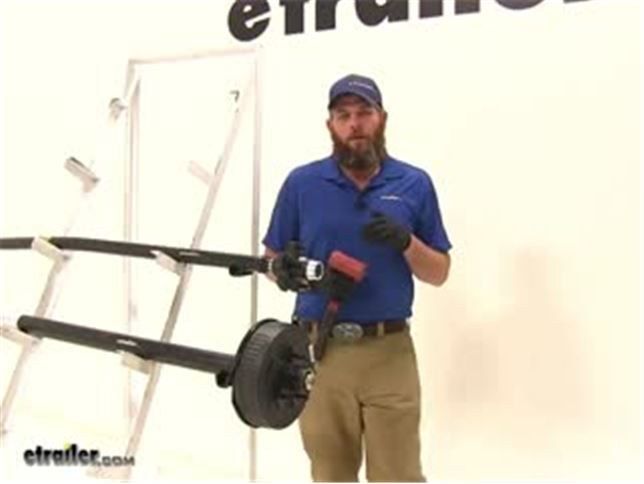

Videos are provided as a guide only. Refer to manufacturer installation instructions and specs for complete information.
Video Transcript for Trailer Bearings Races Seals and Caps Rebuild
Speaker 1: Today we're going to take you through the rebuild process on a couple of hubs. We've got an idler hub, and here we've got a hub and drum assembly. Works with electric rigs, but this can also work for just standard discs, if you've got a disc brake style setup.Basically what we're going to show you is how to get all of the bearings out. How to remove the seal. How to remove the race's if they're damaged, then get them replaced in the proper manner. We'll show you how to use an easy loop hub, which we have here.The first thing we are going to need to do is, get the grease cap off the end.
It can have either a rubber plug in it like this one does, or it can be a solid metal cap.These are pressed fit in there, basically by tapping on them on the back side. To remove them, a deadbolt hammer is typically what we're going to use. We're just going to start tapping as we go around. You'll see a little separation start right here, and slowly it'll work it's way off.Now the next step's going to vary a little bit depending on your axle setup. Do you see this is going to have a keeper that goes around the nut.
And that prevents that from being backed off, or removed. A lot of times you'll have a castle nut, which will have just little tabs that stick off, and there will be a cotter pin that passes through it. Just depending on your application, you need to get the keeper for the nut off. This style we just kind of pry out. A cotter pin you would just remove of course.Once we have that off ...
We'll start to take off the nut here, and the washer that's in behind it. Now yours should look a whole lot more dirty than this. There should be a lot of grease packed in, and through the hub, this one's brand new. We thought it'd be nice to show you the components before the grease was on .. Of our washer that comes off.And then here we're going to have our outer bearing.
Continue to pull that. We're gonig to have our inner bearing here. That sits in the backside of the hub. And we didn't put it in yet, we will show you how to put it in. But a seal would typically be covering the backside here. We'll show you how to use a seal removal tool, or another tool. To get that pried up and out. To get an access to that inner bearing.Now for a drum style like this, that process for disassembly is going to be just the same. One thing to keep in mind if you're using a disc brake setup. You'll have to remove the caliper before the disc is going to come off.Now once we have the spindle exposed, as we said this is going to be really greasy. We want to get all the grease removed, and the first thing we'll do is inspect it. We want to make sure that it looks just like what we have here. Everything's nice and smooth. We don't see any kind of discoloration, or any marring on the metal. Indicating that our bearing's got hot.If you do have any of those symptoms, at this point it's time to replace those bearings. You don't want to repack them. Get new bearings, and put in there. You might have a bearing that's come apart in here. Another surface to ensure is in good condition, is where your seal is going to go. That helps seal all the grease inside of our hub. With a damaged or broken seal, that grease is going to seep out. Either out of the hub, or in this case into our brake assembly.Now if your axle has brakes, we're also going to check the disc. Make sure it doesn't have any issues, or your hub. And this is going to be a hub and drum assembly. The brakes are going to ride on this machine surface. You're going to check that for signs of excessive heat, discoloration, or cracking. And this is our magnet surface. We'll check that surface for the same issues.Now inside the hub regardless if it's a disc brake, it's a drum brake like this. Or just a standard idler style hub. You're going to have an outer race. Would be right here, it's a small tapered piece of metal your bearing sits in, and rotates on. That's basically the outer portion of the bearing.You have the same thing here on the backside. This is called the inner race. Now if those show any signs of wear, overheating, or cracking. Those are also something we'll need to replace, which we'll show you how to do in just a minute.Now, with your brake assembly exposed, if you do have electric brakes like we have here. It's a good idea to check all the components for wear, cracking, maybe missing pieces. Check your pad thickness to make sure those are in good shape. Basically if you have a non working brake assembly and you put everything back together, you're just going to have to take it apart and do it all over again to get back to the brake assembly. This gives you a really good option to be able to change them out.And most applications are going to use a four, or maybe a five bolt flange to hold them in place. And you'll just remove the lock nuts, or sometimes you'll have a hex nut with a lock washer. You want to remove those, and then simply slide your assembly off after you cut the wiring.The friction material itself should also be checked for any kinds of cracking, or overheating. If you have any grease inside the system at all, it's likely it's gotten on those pads. It's a good idea to get those changed. Now as far as the removal of the races go, it's going to be just the same whether we're using an idler style hub like we have here. A drum brake like we have here. You can basically see where the idler is, here in the middle of the hub. It's going to go all the way around there, and we just have this extra material here to provide our braking surface.Now if you're doing a disc brake style job again, it's going to be just the same here with the races living inside of the actual hub portion. You'll just have the discs there for the brakes to make contact. We're going to use this little bit smaller one, it's a little bit easier to manage to show you how to get these out. We've talked about where the races are. The outer here, the inner being closer to the inside, but on the backside of the race there's a little lip. That lip's meant to stick out just a little bit further than the hub, and provide us an area to put our tool on, and help to drive that out.If you look all the way through there on that inner race, you'll see that little lip that sticks out just from the hub slightly, and it gives us enough area to use our tool on. Now generally to remove these you're going to use a punch, similar to this. Some guys will use a screwdriver. Or a piece of pipe. If you have a piece of pipe that's small enough to fit inside of that diameter, you can take that down through and allow it to rest on that lip.Use our punch, and then just need a hammer. And we'll start working that out. We're going to tap all the way around. Kind of equally, and evenly apply the force to get it to come on out of the bottom for us.You can see now as it starts to come out there's going to be a little gap created between the hub and the race. And we can just keep going, bringing it on out. Then you can inspect the inside of the hub surface there. Make sure no damage or anything has occurred, and repeat that same process for the outer race if you plan on removing and replacing that one.Now in the outer flat edge, you can see we're going to have our tapered edge on this side. If we roll our race over to the flat side, typically there's going to be a manufacturers part number on there. That will help you identify which race it is, that you need to go back in your system. If those are rubbed off, worn off, if you can't read them. You can measure the outside, to outside diameter of the race here. It's a good idea to use a micrometer to get it exact.Now here's your basic micrometer. And again, the outside of the race is what we're going to need to measure. You want to go . I set the thickest point there. Looks like this one's going to be about 1.98. That's going to be the measurement you'll want to supply.Now while we've got this out, let's also look at the proper way to measure our bearing. Instead of the outside for the bearing, we need to measure the inside diameter. That's going to be pretty simple. Let's pull that out, find the largest measurement we can. Which here, looks like it's going to be 1.03. With that information, we'll be able to get the correct bearing, and the correct race, so they'll fit together properly and make a full bearing kit for us.Now here's the race, we're going to show you how to get this put back in. Basically just going to press fit inside of our hubs. We need to get it down on there. Kind of like that. And you'll have a couple options. A lot of times you're going to see do it yourself or at homer, just going to use a wooden block. Just place it on there. That's going to get you started, but at that point you'll struggle in getting it to go all the way down into it's seat.Now to take care of that problem, there are several seal drivers that are available. Seal and race drivers that are available out there on the market. It's designed to fit down inside of our race, inside of our hub and get it down there where it needs to go. This is part number ptw83020, has several different sizes, even if you have multiple trailers it's going to do the job.Now the side with the angle on it, is designed to fit down inside of our race. If we use the other side, that's going to be for driving your seal into place. Just want to hold it, and take it on in with your hammer. You'll see, you just want to insure that our race is all the way up against that line on the hub where it's supposed to mate to.Now when it comes time to pack your bearings you're going to have several different ways of doing this. You can just use your hand, is the traditional method. That's going to be the method probably reserved for the very occasional trailer work kind of situation. If you do it once or twice a year, probably get away with it that way.Next you would go to a, kind of a sandwich funnel style almost. If you look inside of there, you can see the bearing. It's located between the two pieces. Just use a grease gun. Start filling that with grease, and that's going to fill our bearing for us. And the third, with this one you're just going to place your bearing down and in. It should be pretty close to center. And then we've got our cone her that's going to go down and secure that.Now I think this style, wastes a little bit more grease than what this style will. This has a dust cap. You can see, you can keep your grease in there, put your dust cap on there and save it for later use. This will be if your going to do it every couple years. And this particular style would be if you're a more regular user.Let's start by showing you how to use a bearing packer. Similar to this. Again, we've just got our grease inaudible 00:11:07 here on the top. And then just slowly start to fill it. Now I like this style quite a bit. I think even regular users might enjoy it, because you can get a really quick visual look at that bearing. You're not going to have to overdo it, or have to much grease.You can kind of see in there now, we're starting to get grease to come out of it. Couple more pumps, we'll be good. You can see we've got grease coming out all the way around. Where all of our bearings are. Got a little bit of excess there. Just take that around the outside of it. And then we should be able to lift it off. And now you can see what we we're talking about. Just a little bit of excess there, that you're just going to wind up wasting.Now we'll take our bearing, we're going to place it right down in our race. And then we'll cap off the back with our seal. Right now our seal's going to fit in just like our race did. It's going to have a little bit of a pressure fit to it. Now very often in this situation, I see people using the four by four method. Kind of here, just placing that on and tapping it. As an option though, if you do have one of these. You can see that's designed to fit right on the top of the seal. And help drive it in.The biggest thing here is, just going to be getting it driven in squarely. You can see, this side's in a little bit further than this side. I'm going to start this side first. Now since we didn't have the opportunity to show you before, we're going to take a look at pulling a seal. Now this is a seal puller, we carry this on our website part number ptw1219. This is meant to hook underneath the seal. And then you kind of pull up on it, and just like our race you'll have to work all the way around that edge. Just bringing it out a little at a time.If you don't have that available. Another option would be a screwdriver. You just kind of get that under the seal, and turn it. And see, that'll allow you to also pop that out. We've taken care of our race. Our inner bearing. Our seal. The last component, before we put our hub back in place is going to be our outer bearing. Now with this bearing, I'll show you the hand packing method.This is definitely . Slightly dirtier method than the bearing packer. When we get grease on our hand we want to look at the larger side of the bearing. This is the smaller side. We have a larger side In between the inside and outside there's a gap. We can see our rollers in there. We want to grab that, and use that gap and shove grease inside of it. Now this is going to take a little bit, you want to work in the same spot until you get the grease pushed all the way through. We can see on the top there we've got a little bit starting to come through.And once we push it in the bottom, and you see it start coming out the of the top in those little drips, it's going to indicate that, that section's fully packed. Just need to work all the way around their outside edge now and do the same thing. Alright, once that's all the way around . The bearing will be ready for use.Now one more thing I like to do. We can see our inner bearing there, and our outer bearing. Well between the two, got a pretty big gap in there. If you'll take a . Pretty good amount of grease. We're just going to go all the way around. See how we can go all the way around the inside and just line that really well. The more grease we have in here, the less chance we have of any moisture getting in there, which can cause corrosion, rust, pitting. Pretty much things we do not like when it comes to bearings, races, and hubs.Put plenty of grease in there. And then this one does have the easy lube spindle, that'll even fill it in more. Now we can get our assembly slid on. I like to keep my thumbs on that outer bearing, just to prevent it from . inaudible 00:15:28 pushed off there. Now we can put on the original hardware that we removed, in taking off our hub the first time. In our case, we had our washer and our nut.Now most commonly you'll see pliers similar to this being used. We basically want to get that tightened down. Once it's fully tightened down you'll feel some resistance in the hub. We back it off just slightly. That'll give us a little bit more freedom of motion there. Something you don't want however . Is any movement in, or out on your hub. You want to be sure that everything is compressed, and you don't have what's called end play. Which would be the play in and out.Once we've got that set, then you'll put on whatever tight keeper yours came with. Get that put back in place. Now with an easy lube style hub, you're going to place your grease gun on the end, and then you can just fill the remainder of that hub up.Now for your typical applications, you're either going to have a solid cap, or a cap that'll have a rubber plug in it. A solid cap's going to be for an axle without the grease inaudible 00:16:51 here on the end. Goes on there. Just knock it on with your rubber mallet. Same with the one with the plug. Just gives you a removable area there, be able to cap that off.We'll show you how to put that on. Now as alternatives as well, a lot of times on boat trailers and marine kind of situations. You'll see a bearing buddy. This is going to apply a little bit of pressure on the grease, you'll fill it up. This kind of comes out just a little bit. That applies constant pressure on the grease to make sure we don't have any air, or anything like that. Then there is also an oil bath hub available. Now this is going to be for use with seals that are going to be designed specifically for oil bath use. You'll have to change that seal.We're using a double lip seal. There are also single lip seals available. Of course a double lip seal is going to give you just a little additional security. Keep that in mind when you order. But let's get this knocked on there now so you can see how that works. We just want to take the cap, we're going to center it. This is going to be very similar to what we did with the seal. And then just gently start tapping it around the outside. And it'll seep down on there for you.It's really going to be the same thing that you'll do with any of the end caps. Now with this side done, it's a good idea to take care of all the other hubs. Get them all on the same maintenance schedule. And as long as you'll periodically check the grease, take your trailer out for a trip occasionally. Just to keep everything lubricated. It should extend the life of these parts, and give us years of good service.
Customer Satisfaction Score:
99% were satisfied with this product
1% of customers were not satisfied
- Wrong item was ordered
- Product did not meet expectations
- etrailer mistake
Customer Reviews
Replacement Race for 14125A Bearing - 14276
Average Customer Rating: 4.8 out of 5 stars (44 Customer Reviews)
Race provides smooth surface for bearing to roll on inside of trailer hub. Works with 14125A bearing. Replacement part uses industry-standard number.Looks good
Fit perfectly
Thanks etrailer for helping me to get my package delivered after a few failed attempts not due to etrailer. I have received my parts and can make my repairs.
Quick Communication and getting issues resolved quicker than we request
fits my 1999 Kaufman 3 car wedge trailer with Dexter 12"x2" brakes 6k 7k lb axles 8 lug wheels
Exactly what I needed. Youtube showed me how to take out the old and put in the new bearings and races. They fit perfectly. The part no. was hard to research, but I was pretty sure what I ordered was the right set. I confirmed the part numbers when I beat the races out of the hub. The part number was embossed on the inside of the race and they matched the ones I ordered. I got them via ground delivery much sooner than they said. I received them in about three days and it only took an afternood to install them and new brakes. Can't beat the satisfaction of doing something yourself and saving hundreds of dollars in the process.
Race fit the bearing PN14125A as it should. Was installed with a race driver with no issues. It was installed on a 12,000 dump trailer with 6000 lb. axles. Replaced a race that was damaged due to a frozen bearing.

4 NEW DRUMS 12 -2 INCH 8 LUGS. FOR MY TRAILER THEY ARE OUT OF ROUND FROM DAY ONE . IF I USED TRAILER I WILL GET THEM CUT.{ U HAVE GOOD PRICE.} BEARING OK.
They look to be a quality product. I would have liked the bearings and races packaged so they could be stored with out damage or a chance of rusting. Two of these sets are spares so I don't have to sideline a trailer for an extended period.

Right price, good quality. I have put a couple thousand miles on since the installation and all is good.
Products were shipped expedited and arrived very quickly. eTrailer's customer service is exceptional and it made my work of preparing my triple axle trailer for crossing from east coast to west coast much easier. thanks again

everything we purchased is performing well. The pricing and service were beyond expectations after dealing with local trailer suppliers in our aera
Excellent service and quick shipping. I will be ordering all my trailer equipment from them.
Stacey set me up with the parts I needed. Iwas happy with the prices and quick shipping.Iwould buy from them again.
Fit great just what I needed
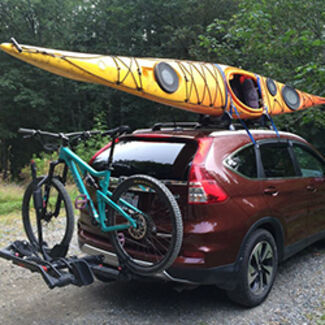
Todd

10/26/2018
Working fine I put them in a post hole digger
Product was exactly as described. Very well priced and shipping got here faster than expected! Will be using this company from now on!!
Got what I ordered, didn't take forever to get here and have no complaints

No problems so far.
Products came on time and were exactly as described. Great service and great quality. Willdo business with again.
Service was great and helpful
received as ordered
Fit just right
Perfect
See what our Experts say about this etrailer Trailer Bearings Races Seals Caps
- Correct Replacement Bearing and Race to Match 02475 Bearing and 14276 RaceThere are differences in them but we do have what you are looking for and they can in some situations be used together. The Replacement Trailer Hub Bearing you have part # 02475 and Replacement Race for 02475 Bearing part # 02420 are designed to work together and the. The race you have Replacement Race for 14125A Bearing part # 14276 for bearing part # 14125A. With that said both bearings have the same inner diameter but the races are slightly different in size the 02475 is 2.688" outer...
view full answer... - Converting Standard 7K Grease Hubs to Oil Bath HubsInitially what you need to do is clean out all of the grease in your hub, on/in the bearings, and on the spindle. Once that is done you simply swap out the grease seal for the oil seal included in the Kodiak XL ProLube Kit # XLPROLUBE2440KIT (which has a 2.25" ID and 3.376" OD) and reinstall everything. You do need to make sure that the ID of the oil seal matches up with your current system so that it keeps your oil from leaking. If you are needing to replace the bearings and seals as...
view full answer... - What is the Difference Between 1.25 Inch Trailer BearingsThe short answer is Yes, bearing # 15123 is slightly larger and stronger than # LM67048 and they use different races which means they are not interchangeable. Bearing 15123 uses race # 15245 which has an outer diameter of 2.441 inches and bearing LM67048 uses race # LM67010 which has an outer diameter of 2.328 inches. The size and strength differences are due to the fact that bearing # 15123 is used in a higher weight capacity hub. Bearing # 15123 is the outer bearing for a hub for a...
view full answer... - Bearings and Seal Needed for Lippert 8K AxleFrom what I could find online it looks like the Lippert 8K axles use inner bearing # 25580, outer bearing # 02475, and a grease seal that has an inner diameter of 2.250". If you are using a Kodiak disc brake kit like part # K2HR712D for 7K axles then it would make sense that this wouldn't fit correctly as this kit comes with an outer bearing # 14125A which is about 0.040" larger as you have found. If you have bearings for the 8K axle but you are using 7K rotors then all you need to do...
view full answer... - Replacement Bearings, Races, Seal, and Studs for Trailer Hub 008-479-05The stud replacement you need for the 008-479-05 is the part number # K12WB2. The seal you need is # GS-2125DL, bearing # 14125A, race # 14276 and bearing # 25580 and race # 25520.
view full answer... - Will The HydraStar Disc Brake Kit for Triple Axle Trailers Be Compatible With 7k Dexter AxlesYes, the HydraStar Disc Brake Kit w/ Actuator for Triple Axle Trailers - 13" Hub/Rotor - 8 on 6-1/2 - 7K # HSE7K-TR1 should be a compatible fit for your triple 7k Dexter axles. You'll just want to double check that the bearings match your spindle. This kit uses Inner bearing # 25580, Outer bearing # 14125A, Inner race # 25520, Outer race # 14276, and Grease Seal # GS-2250DL.
view full answer... - Replacement Bearings, Races and Seals for Dexter 7000-lbs Axle 8561335I was able to determine through my contact at Dexter that your 7000-lbs axle originally had an oil bath hub that uses the following bearings, races and seals: Inner Bearing # 25580 Inner Race # 25520 Outer Bearing # 14125A Outer Race # 14276 Grease Seal: # GS-2250DL You can also use the Dexter Trailer Hub and Drum Assembly - 5,200-lb to 7,000-lb Axles - 8 on 6-1/2 - Oil Bath # 8-219-9UC3-A, which is the direct replacement hub and complete bearing set that was originally on your axle.
view full answer... - Replacement Bearings and Grease Seal For 7,000 lb Dexter AxleI was able to verify for you the correct replacement bearings for your Dexter 7,000 lb axle, and you were off to a good start with the seal. The only other things you will need are the bearings and races; and also keep in mind that the grease seals are sold as a pair. Since you mentioned your 5th wheel was 41 feet long, I assume you have a tandem axle trailer, so you would need to order one of the following kits for each hub: - Bearing Kit, 14125A/ 25580 Bearings, 10-36 Seal # BK3-200 This...
view full answer... - Replacement Parts for Trailer Hub # 8-219-9UC3-A Here are all the replacement parts for the hub part # 8-219-9UC3-A: Replacement bearing # 25580 Race # 25520 Bearing # 14125A Race # 14276 Seal # 10-63 Oil cap # RG04-230
view full answer... - What Trailer Hub Fits Outer Bearing # 14125AThe bearing number you referenced, # 14125A, is an outer bearing that will fit a number of different hub assemblies. Those compatible hub part numbers are # 42866UC3, # 8-219-4UC3 and # 8-231-9UC1-EZ. We also offer the matching race for this bearing, which is part # 14276. The inner diameter of this bearing is 1.250 inches. I have linked an article and several videos on hubs and bearings that may be helpful to you.
view full answer... - Bearings and Races for 7,000 Pound Trailer AxleThe most common bearings and seals for a 7,000 pound axle are # 25580 inner bearing, # 14125A outer bearing, # 25520 inner race and # 14276 outer race. The grease seal can vary, and will usually either be the # GS-2250DL, which has a 2.250 inch inner diameter and 3.376 outer diameter, or # GS2125DL with a 2.125 inch inner diameter and 3.376 inch outer diameter. We do also offer complete bearing kits for this axle. For the GS-2250DL grease seal, you can use the Kit # BK3-200. For the #...
view full answer... - Disc Brake Kit for 5th Wheel Trailer That Uses 8-Lug Wheels on 6000-lb Dexter AxlesThe key to selecting disk brakes for your 5th wheel is to match up the bolt pattern (in your case 8-on-6-1/2) as well as the brake flange mounting hole pattern, bearing set and axle weight capacity. It is fine to use a brake kit rated higher than your axle capacity, but never one rated lower. You need to match your hub's bearings to the new kit to ensure that the hub/rotor assemblies will fit your spindles. The Kodiak Disc Brake Kit # K2HR712 that you referenced has the bolt pattern and...
view full answer... - Recommended Bearings, Brake Assembly, and Hub for a Dexter 7,000 lbs AxleBearings - Inner Bearing item # 25580, Outer Bearing item # 14125A, Inner Race item # 25520, Outer Race item # 14276, and Grease Seal item # GS-2250DL Brake Assembly - Dexter Nev-R-Adjust Electric Trailer Brake Kit 12" - Left and Right Hand Assemblies item # 23-464-465 Hub - Dexter Trailer Hub and Drum Assembly - 7K lb E-Z Lube Axle - 12" - 8 on 6-1/2 - 5/8" Studs item # 8-219-18UC3
view full answer... - Replacement Bearings for Mobile Home Hub with 1-1/4 Outer and 1-3/8 Inner BearingsIt sounds like you're trying to replace hubs on a mobile home axle. Mobile home axles are designed for one time use, to transport the mobile home from point A to point B and then intended to be discarded after that. Because of this, replacement parts are rarely available for most mobile home axles and although we don't have a hub that matches the bearing sizes you mentioned, we have replacement bearings that may work to service your existing hub. For a bearing with a 1.375 inch inner...
view full answer... - Recommended Disc Brake Conversion Kit for 2020 Grand Design Momentum with Triple AxleI have a solution for you, but unfortunately the # K2HR79 cannot accept 1/2" wheel studs. In order to convert from electric brakes to disc brakes with an oil bath, that will also allow you to use your current 8 on 6-1/2 bolt pattern with 1/2" studs you'll want to use the Dexter Disc Brake Kit # K71-694-695-11. These rotors have an E-coat finish for better protection against the elements and the hub comes with the bearings, races, seals and oil caps included, so you won't have to track down...
view full answer... - Replacement Bearings and Seals for Dexter Axle 8-219 Hub and Drum AssemblyThank you for all of that information, it really helps boil down what you're needing. If you're wanting to replace the entire hub and drum assembly then you can use part # 8-219-4UC3 for a standard spindle or part # 8-219-4UC3-EZ if you have an EZ Lube spindle. These come with grease seals for a 2-1/8" diameter spindle so if you have a grease seal that uses the 2-1/4" inner diameter you'll need to swap out the grease seal with part # RG06-070 so that it fits properly. The electric brake...
view full answer... - Replacement Grease Seal and Bearing Kit For a 2020 Grand Design Solitude 375RES With 7,000LB AxlesYour Dexter axle on your 2020 Grand Design Solitude does use the Grease Seal # GS-2250DL. This seal is also found in our Bearing Kit # BK3-200 which I do recommend keeping on hand incase you have an issue while on the road. The kit contains the Seal # GS-2250DL, Inner Bearing # 25580, Inner Race # 25520, Outer Bearing # 14125A, and Outer Race # 14276. We also have the Spindle Nut Kit # RG05-100 in the event the nut, washer and retainer are somehow damaged. The Seal Puller # PTW1219 and...
view full answer... - Electric over Hydraulic Disc Brake Conversion for 7,000 lb Nev-R-Lube AxlesFor your 2010 Jayco Designer with 7,000 lbs Nev-R-Lube axles we have several disc brake options that will fit. The weld on flange bracket that you mentioned is only necessary if there is not a flange on the axle, since your's has a 5 bolt design, it's already installed. There are 3 potential sizes of lug studs that mount the wheel and tire, 1/2", 9/16" and 5/8", so you want to check the size so you can use your current wheels and lug nuts. All of the kits will give you a 8 on 6 1/2" bolt...
view full answer...
Do you have a question about this Trailer Bearings Races Seals Cap?
Info for this part was:



At etrailer.com we provide the best information available about the products we sell. We take the quality of our information seriously so that you can get the right part the first time. Let us know if anything is missing or if you have any questions.
































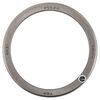












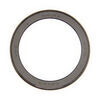
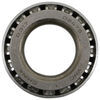

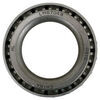
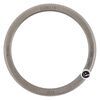
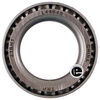

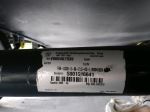

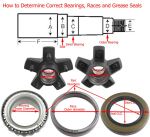
Steven
1/28/2024
Very Good